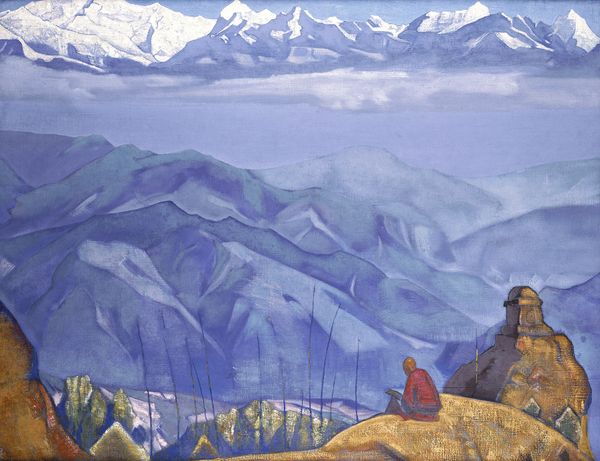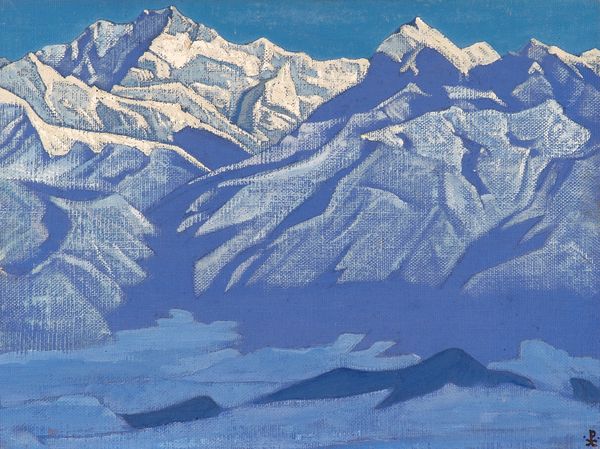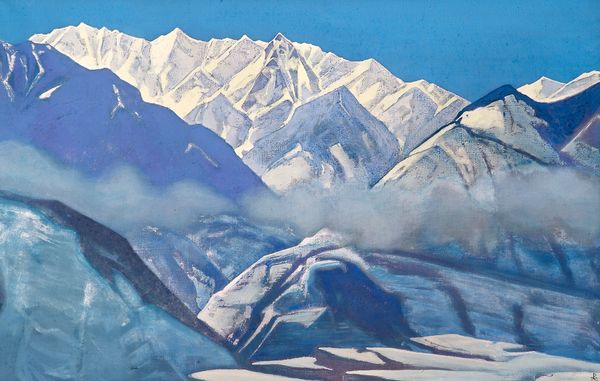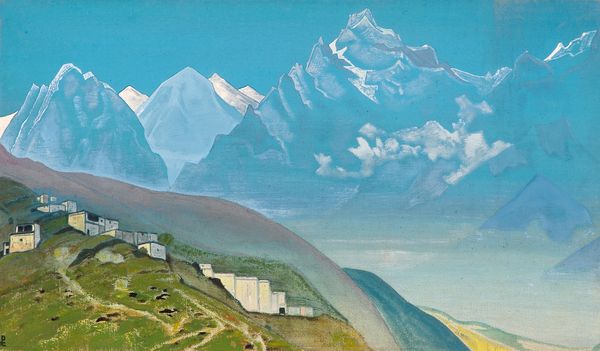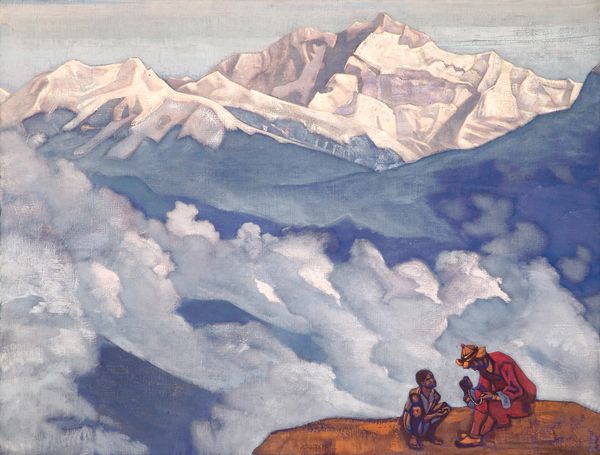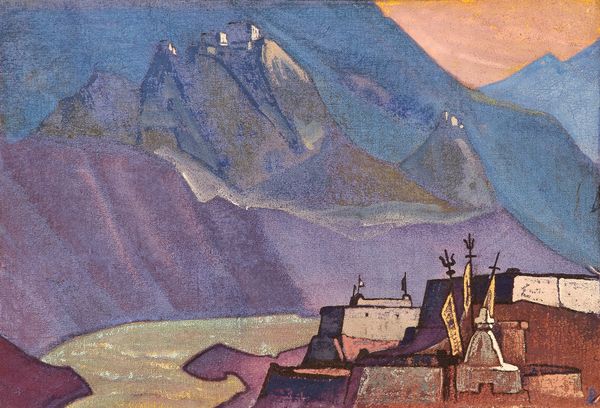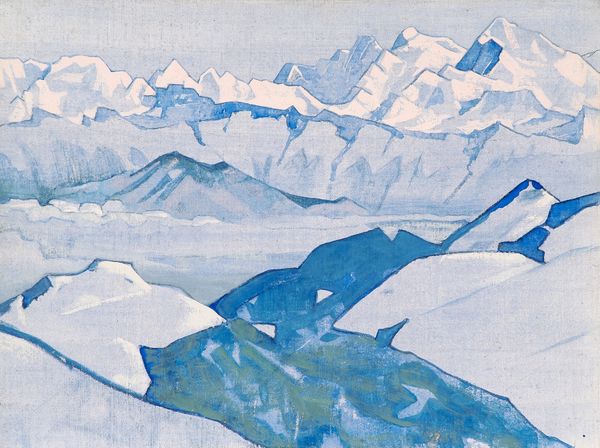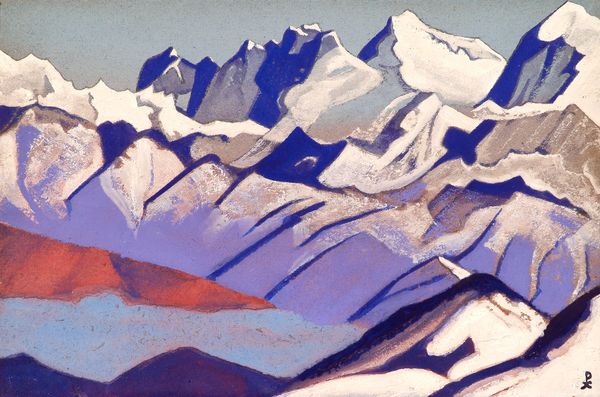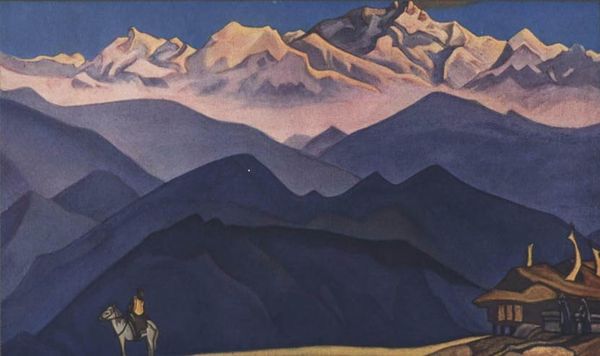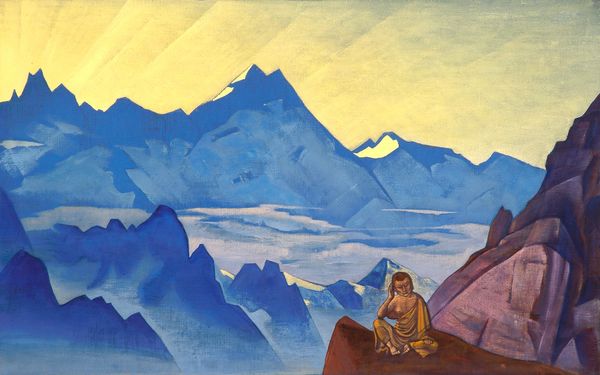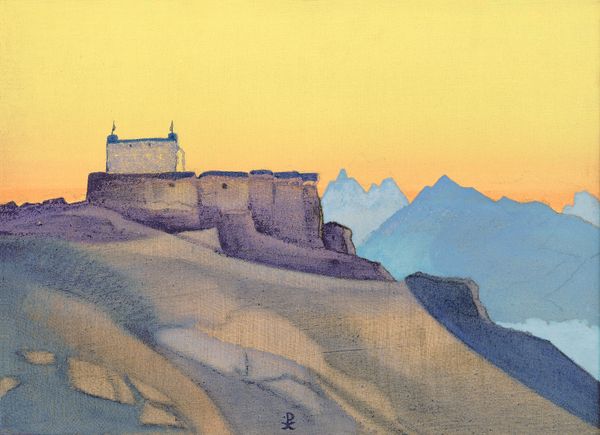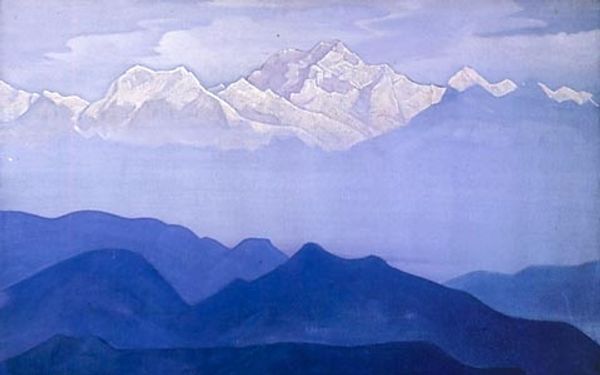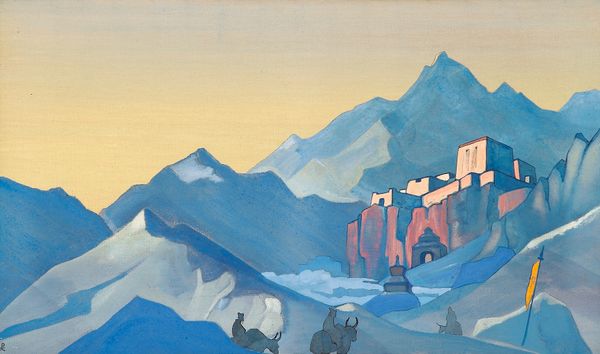
Dimensions: 87.6 x 117 cm
Copyright: Public domain
Curator: "Remember," created in 1924 by Nicholas Roerich. It's held at the Nicholas Roerich Museum in New York. What's your initial take? Editor: There’s an ethereality that feels both peaceful and unsettling. The cool tones, particularly the blues, create this spacious, almost dreamlike atmosphere, despite the concrete image of the mountains. Curator: I'm struck by the layering of these soft watercolor washes; how Roerich suggests depth in those distant mountain ranges. It’s fascinating to consider the availability and preparation of his pigments. Where were these sourced and who was involved in that process? What were the prevalent trade routes like at that time impacting pigment availability? Editor: Right, it also resonates with a certain Orientalist gaze prevalent in early 20th-century art. Considering Roerich's own cultural background and engagement with Theosophy, this image offers us ways to look at cross-cultural exchange. Is this respectful dialogue, or cultural appropriation and a projection of Western ideals onto Eastern spirituality? The rider, seemingly a lone figure, also triggers my reflection. Curator: The rider is rendered rather simply isn't it? The way that rider is placed, juxtaposed with what appears to be some sort of temple and attendants suggests Roerich had to consider labor logistics carefully. How to translate traditional architectural design into accessible methods for manufacture? Editor: Absolutely. We should acknowledge how artistic production can engage in the reproduction and reinforcement of class structures. Curator: Precisely, while appreciating its visual harmony, the art demands investigation into its making; the people, the economy, and the production methods that went into the creation of art objects. It seems imperative to analyze it in all its layers. Editor: Well, Roerich's "Remember," viewed today urges conversations about appropriation and representation, leading to a deeper critical appreciation. Curator: I concur, by looking closely at the construction of Roerich’s ethereal landscape, it highlights broader industrial practices and the social context in which it was made.
Comments
No comments
Be the first to comment and join the conversation on the ultimate creative platform.
